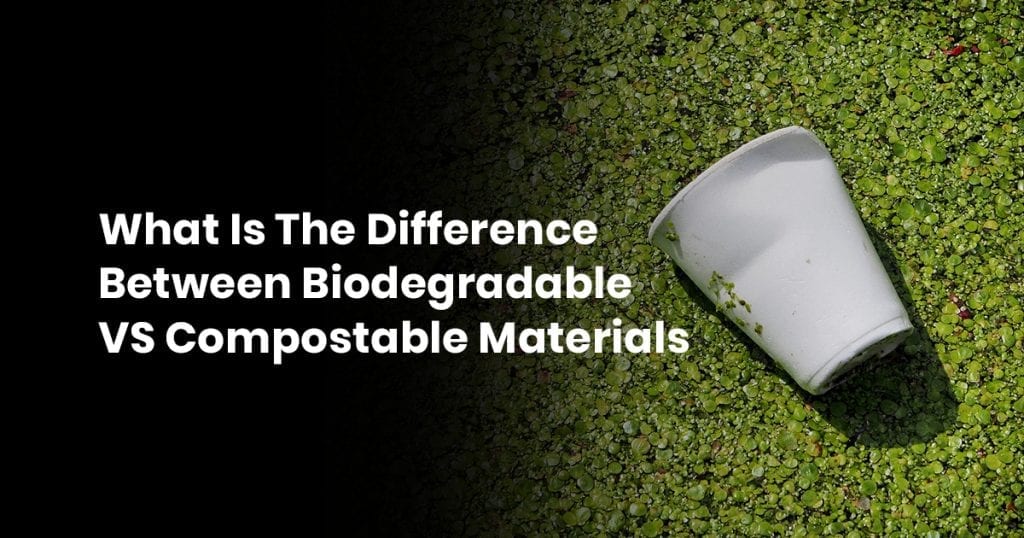Biodegradable items could help preserve the planet, and compost is actually referred to as plant superfood and black gold.
The difference between the two is complicated.
It comes down to the length of time that the item takes to degrade, chemical composition, and the way microorganisms react to the materials in question.
Biodegradable items are usually set to degrade within a few years, whereas compost takes a lot less time.
The best way to discuss the two of these and celebrate their differences is with a clear and solid definition, as defined by dictionary.com.
Biodegradable Definition: Capable of decaying through the action of living organisms.
Compostable Items: A mixture of various decaying organic substances, as dead leaves or manure, used for fertilizing soil. (compostable is an adjective variant of compost.)
If we look at them like this, then there is a big difference between the two. One is organic, and one is an eco-friendly synthetic.
When you see the term biodegradable, it means that naturally occurring organisms are the only things that will enact the decay of those items.
Compost is a mixture of various decaying organic substances, meaning that the materials are already decaying before being mixed together. The devil is in the details.
These two words are basically representations of organic versus synthetic waste. If we dissect the word biodegradable, it means degradable through biological means, being nature.
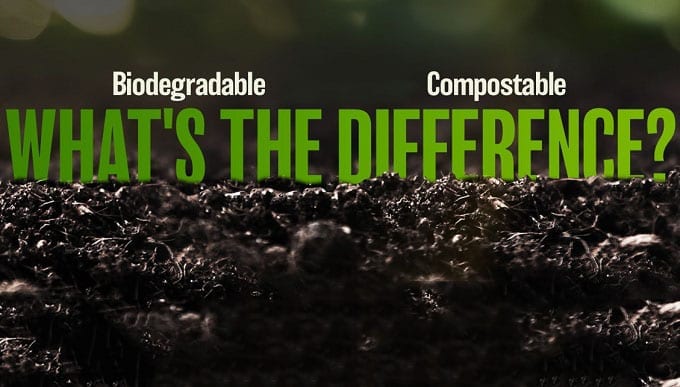
That means a biodegradable item needs to be introduced to specific circumstances in order to decay.
That decay period can take anywhere from six months for biodegradable water bottles, up to two years for thicker biodegradable silicone products.
Biodegradable doesn’t necessarily mean good, either.
Sure, it’s better than one piece of plastic being around for a millenium, but it still bleeds toxic chemicals into the soil, which eventually washes away to poison our streams and oceans.
Compostable items will decay on their own, and naturally blend back into nature with no toxic remnants or carbon footprint left behind.
However, compost is a conditional environment as well, because it requires a mixture of different organic compounds in order for microorganisms to thrive.
Microorganisms begin to build in a compostable environment, filled with compostable items. Those microorganisms need two things to survive and thrive, and they are carbon and nitrogen.
A perfect blend of these will allow the items to degrade quickly, and provide the perfect environment for these organisms to thrive.
If there’s not enough nitrogen, you can’t break down the carbon.
If there’s not enough carbon, your nitrogen basically “burns out” and doesn’t do anything. Compost is tricky, but infinitely better than biodegradable items.
The difference between these words is substantial, but marketers don’t see it that way.
They are bound to certain laws when it comes to advertising, and as a result they have to state when something is biodegradable, even though they don’t clarify what that means.
Biodegradable and compostable are not the same thing.
Contents
Can an Item Be Biodegradable and Compostable at the Same Time?
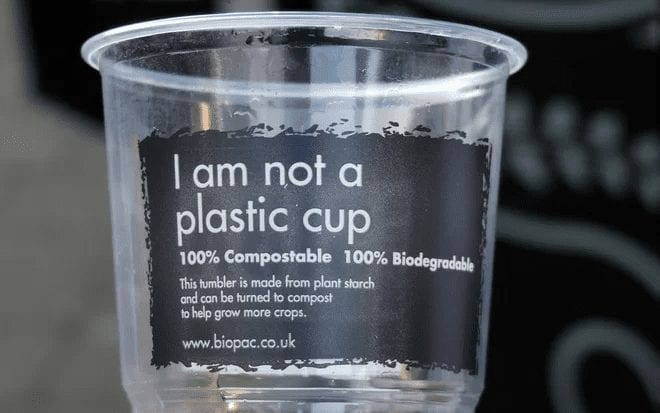
No, it’s impossible for the item in question to be classified as both.
A biodegradable doesn’t necessarily require oxygen to break down. Sure, it might help, but eventually it will degrade anyway.
A compostable item requires oxygen, nitrogen and carbon to break down, which are all parts of nature.
If an item is biodegradable, it means it will break down regardless. The ideal conditions are nice, but not required for the item to break down.
It may affect the time in which it takes to break down, but the point of biodegradable items is that they will break down on their own without any further action required by humans.
Compost actually takes a lot of work to create.
There is naturally occurring compost in nature, but when one of us makes a compost at home for our garden or farm, we are responsible for mixing the organic ingredients.
Many farmers and gardeners use compost bins, which usually sit on a couple of stands, and look like a big steel barrel on its side.
There’s a crank where you can churn the items so that they’re not resting, and oxygenate more areas of the compost.
This is also the ideal environment to test for a balance between carbon and nitrogen.
By the quite literal nature of their decomposition, nothing can be biodegradable and compostable at the same time.
How Long Does an Item Take to Biodegrade?
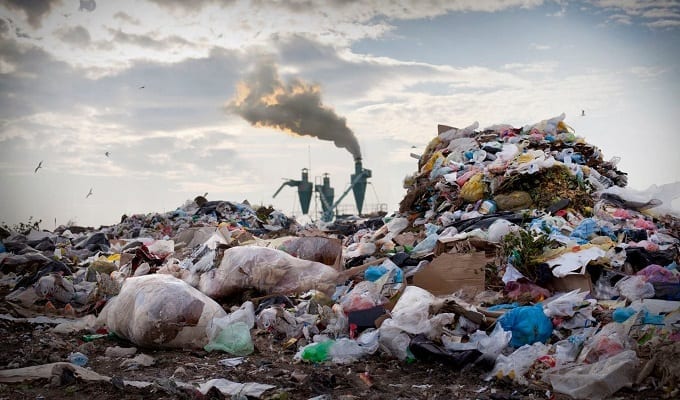
It varies depending on the density of the item, the material, as well as the conditions that it is in.
Biodegradable paper goods can deteriorate remarkably fast, in as little as three months to around four months. That’s a really good thing for the environment.
Then there are other items that are built out of one of two kinds of polymer. Polymer is the term used to describe a specific molecular chain, and the two types are either natural or synthetic.
Natural polymers are materials like wool, cotton, and leather. Synthetic polymers have a simplified, slightly altered composition in their molecular chain to make plastics and silicone.
Naturally occurring polymers will break down in nature, because that’s where they came from.
A canvas bag will take a year or two to fully biodegrade, with the help of microorganisms and a touch of UV rays from sunlight.
A synthetic polymer, even one that is biodegradable, has a much more difficult time breaking down.
While biodegradable means that it breaks down on its own, any polymer will benefit from sunlight.
Ultraviolet rays in sunlight are one of the few things that can break down the molecular chain of polymers.
As a matter of fact, ultraviolet rays also break down collagen in your skin, which is basically the elastic component that helps keep your skin taut and looking young.
We always hear about the harm of ultraviolet rays when we’re talking about biodegradable sunscreen, and the danger is very real.
If you decide that you want to let biodegradable plastics decay on your own property, make sure there’s plenty of sunlight.
How Long Does Compost Take to Make?

Composting doesn’t take a lot of time, even compared to the rapid decomposition of some biodegradable items.
The longest that compost can take to make is about ninety days, or three months, but an item begins composting the moment it’s thrown into that environment with other compostable elements.
That time can be accelerated if you are planning on creating compost, and measure the ingredients used in the bin down to the last gram.
While a balance of carbon and nitrogen are required, it’s impossible to have a perfect 50/50 balance, unless you curate the ingredients and weigh things accordingly.
Some businesses strictly create compost for sale, and fine-tune their batches to be extremely effective.
Unlike biodegradable goods, which are still present and visible throughout most of their degradation process, compostable goods break down rapidly and take on a similar look of freshly tilled soil.
Compost is the most natural and effective fertilizer for any crop or soil. It’s like sprinkling plant food, minus all the chemicals and colors.
Composting brings microorganisms back to the soil, which can help revitalize the earth. It doesn’t hang around for months or years and block sunlight from feeding the grass and plants.
Why do Some Bags Say They Are Biodegradable Through Composting?
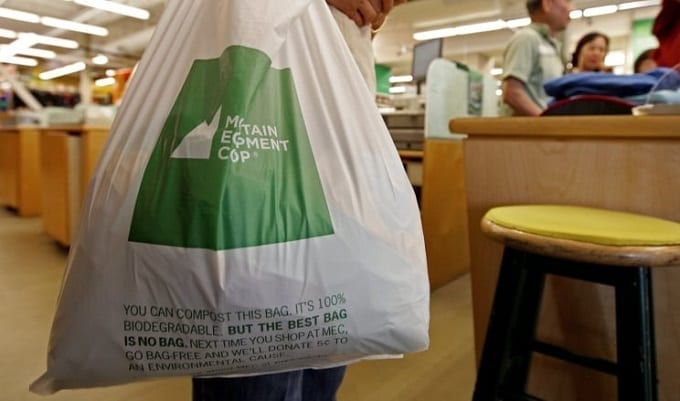
It’s an attempt at sounding extremely intelligent, though companies disregard that these are two separate things that go through two separate processes.
If you buy your use plastic bags that are “biodegradable through composting,” it simply means that they will break down a little faster in nature with the presence of microorganisms around them.
Technically, the same is true for non-biodegradable plastic. Harsh plastics won’t just disintegrate after a thousand years; there has to be certain conditions in order for that breakdown to begin.
Are Biodegradable Items Worth My Time?
While we may have sounded a bit harsh on biodegradable items, they’re still a very good thing.
It’s a step in the right direction, because polymer products that aren’t biodegradable will still be here in the year 3019. Let that sink in for a moment.
Biodegradable items are still something you should look for when available.
The problem is, biodegradable plastics aren’t separated or recycled in a different manner, so many of them can still end up in landfills and the ocean instead of degrading in a more hospitable environment.
They will still break down, just not in record time.
Biodegradable products are also priced slightly higher than their plastic counterparts, primarily because the production of biodegradable packaging and materials can cost a little more for manufacturers to make.
It shouldn’t, but it does. With all that said, biodegradable plastics and other goods are much better for the environment, but they’re not a perfect solution.
There isn’t some fight between biodegradable and compostable products: buy both, and you’ll be doing the world a service by literally feeding the planet, and drastically reducing the amount of pollution we are causing.

